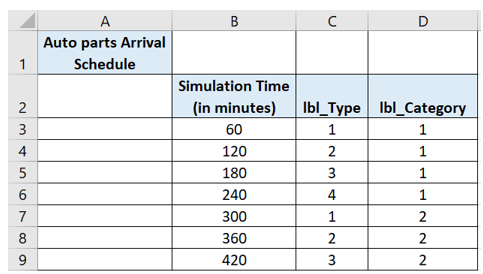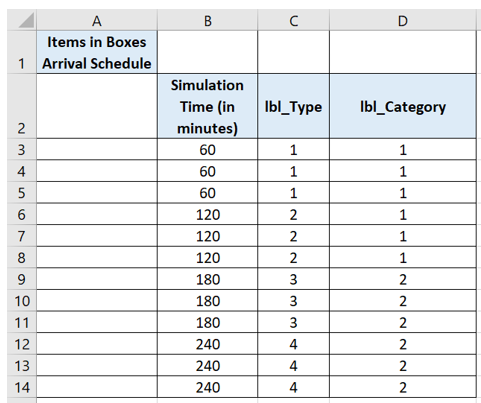Arrival Times from CSV File
This feature reads from a CSV file the exact times Work Items should be generated at a Start Point. It can also assign Label values to the Work Items. Check the 'File' option on the Start Point's Additional tab and then select the file to use.
This feature requires the csv file to be formatted in the following way:
- Each row corresponds to a Work Item
- Data must start on the 3rd row. The first cell in row 1 and 2 must be populated - row 1 could contain the simulation name and row 2 the column headings
- The time the Work Item enters the simulation must be in the 2nd column
- Label values (if required) are contained in columns 3 and onwards. Column 2 must contain the Label title exactly as defined in Simul8.
*Note the CSV file must be closed before running the simulation.
Examples
The example indicates how a CSV file should look when used by the Start Point’s File feature. It imitates arrivals of 7 auto parts (rows 3-9 populated with data), where one part arrives every 60 minutes after the start of Simulation Time.
Each part has a type, and the “lbl_Type” Label defines the type of each item that arrives. As shown, you can use as many Labels you want to define the nature of Work Items feeding into the simulation.
The second example is a simulation where batches of boxes with many Work Items (e.g. boxes with different items) of different type and category arrive in the simulation. Here, you can see 12 items arriving, where the first batch arrives after 60 minutes of Simulation time, the second batch after 120 minutes and so on.
You can use any point in the Simulation Time, even if arrivals take place at time 0 of the simulation.

